
Background information
Interview with Daniel Lutz: Swiss game developer based in Montreal
by Philipp Rüegg

Last weekend saw the Tokyo Game Show, one of the biggest game fairs in the world. This year I was right in the middle of it. A visit that is much more worthwhile for the Japanese peculiarities than the games.
In the middle of Tokyo's rush hour: subways packed to bursting point, just like the ones you know from horror travel stories. The stations are not easy to navigate, but still reasonably understandable for 0815 tourists. Once you get further out of Tokyo, it becomes more difficult. There are no special trains to the Tokyo Game Show. So the additional visitors to the fair are simply stuffed into the normal underground carriages until there is no more room. Not recommended for people with claustrophobia.
The day pass costs 2000 yen, the equivalent of around 18 francs, at the box office, or 1500 yen - or 14 francs - for advance bookers. A fair price, in my opinion. Even if the Tokyo Game Show is slightly more expensive than Gamescom, which is also a consumer fair. The ticket and baggage checks at the entrance are perfectly organised. Everyone queues in an orderly fashion. From the moment I enter the exhibition grounds until I get to the hall, I've already covered the first three kilometres.
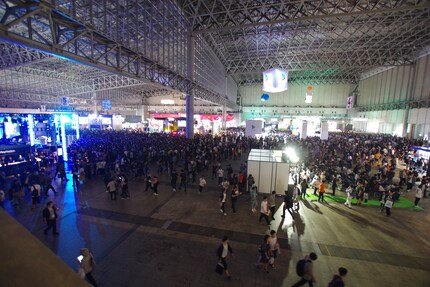
90 per cent Japanese, 8 per cent rest of Asia and 2 per cent rest of continents. The Tokyo Game Show is clearly not aimed at Western markets. This is also reflected in the language. Everything is in Japanese and only a few people at the stands even speak English. Even American and European studios usually have Japanese people at the booths. My rudimentary Japanese was an advantage, but by no means sufficient. Even the official app is only available in Japanese.
At the TGS, you have two to four lanes per hall, which all go in one direction. You stand in one and walk along. It takes some getting used to, but it works relatively well. There are cordoned-off areas in front of the stages where you are allowed to stand still. In all other places this is forbidden and is also controlled. Sitting is only permitted in certain rest areas. Some people have folding stools (a plague at Gamescom) with them. However, not for squatting, but for standing on so that they can see more.
When I did have space around me, I was usually standing somewhere I shouldn't have been.
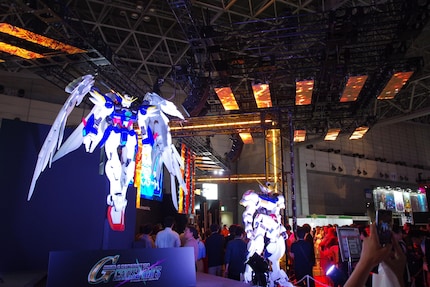
The games on show were also quite a surprise for me. Apart from the Playstation and HP-Omen stands, there were no AAA games. And even then, there was "only" "Borderlands 3" and "Call of Duty Modern Warfare". But a lot of smartphone games in all variations: RPG, fighter, card games, shooting pink plush bears, etc. VR games and accessories were the second most popular. These included suits for tactile feedback, running simulators, odour extensions and heat stimulators. Cool ideas, but if they are not standardised, which I don't think will happen, they will remain expensive, useless prototypes. A pity, really. VR games were also mainly Japan-orientated (samurai fighters, virtual pets, virtual boyfriends and virtual anime girls). Instead, I discovered some cool games that I had never heard of before, such as "Evangelion Battlefield", "Boys be dancing!" or "Cardfight Vangard".
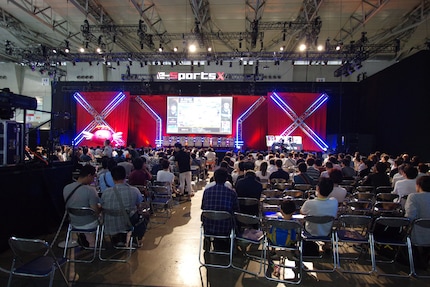
This is very different here. There are several e-sports academies, i.e. schools for e-sports. There were also two large stages in two halls, but they weren't playing the games we usually play here. Instead, the players were playing "Tekken", "Call of Duty", "DoA 6" or "Dragon Quest"."
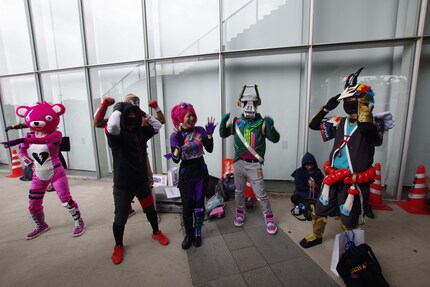
Cosplay was a rather sad chapter at TGS. Cosplayers are not allowed to be dressed up outside the grounds. They have to change at the trade fair. There is an area for this, but it costs an extra 1000 yen. There are also very strict rules: little skin visible, no underwear visible, no costumes made of solid materials and no objects over 50 centimetres. This is much more liberal at other fairs and results in more beautiful costumes.
For the photo session, the cosplayers lined up outside and the photographers formed a line to photograph them. As there were about five times more photographers than cosplayers, there were huge queues. Unsurprisingly, the queues were much longer for the female cosplayers than for their male counterparts.
There were no such restrictions for cosplays at the stands. There were some really beautiful cosplays, but just as many scantily clad booth babes. Practically every stand had a cosplayer of some kind, even if it was just about gaming chairs.

Long queues are one of the biggest problems at Gamescom. When there are queues of three to five hours, it takes up a lot of time and space. At TGS, they have solved this as follows: there are slots where you can queue. These are usually hour or half-hour slots. These are allocated by lottery or in a separate queue. You often have to do something for them, such as follow a manufacturer on Twitter or post something with a hashtag. At other stands, the queue simply stops at a certain length. Because you're not allowed to stand anywhere. And that obviously works.
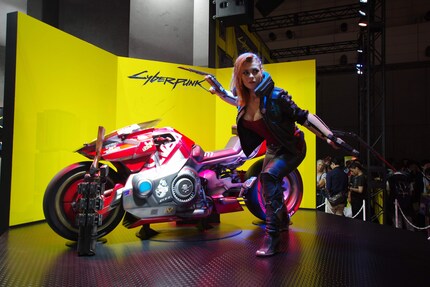
Everything is very strictly organised and the rules are adhered to. There are public areas where photography is not permitted and everyone adheres to these rules. The stands are also constantly checked to ensure that they adhere to volume and space requirements. In Tokyo, for example, every indie game stand was precisely standardised, including signs.
Trash containers are generally relatively rare in Japan, including at TGS. Nevertheless, there is hardly any rubbish lying around, even at the end of the fair. At Gamescom, it always looks pretty sad.
The stands at TGS are kept very open. Unfortunately, there are few demo stations. But almost every stand has its own stage. Live demos are shown, cosplayers are placed on them or a J-Pop girlie band warbles some pop song. No loot is thrown into the crowd. I don't think that would work in Japan either. The stands are all very elaborate and beautifully designed. At most of the stands, many different games are presented and there is usually one station per game. At most stands, the controllers are sanitised and cleaned after each round. Others could take this as an example.
The complete opposite of Gamescom. If you don't put up a fight at TGS, you'll be lugging around 50 kilograms of merchandising material in the evening. Mostly it's just advertising leaflets or brochures, but bags or display folders - which are all the rage here - are also handed out. There are also lots of stands where you queue for a short time, perhaps have to do something, such as install the app, post a Twitter message etc., and then get something by drawing lots. These can be T-shirts, bags, backpacks, waifus or vouchers. Google has set up a huge raffle machine for the Play Store.
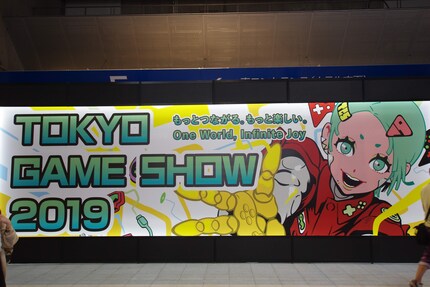
It was exhausting, but definitely worth a visit. The highlight was the very elaborately designed stands. I wouldn't travel to Tokyo again just for that. If I happen to be in the neighbourhood again, I will definitely go back. And learn a bit more Japanese beforehand.